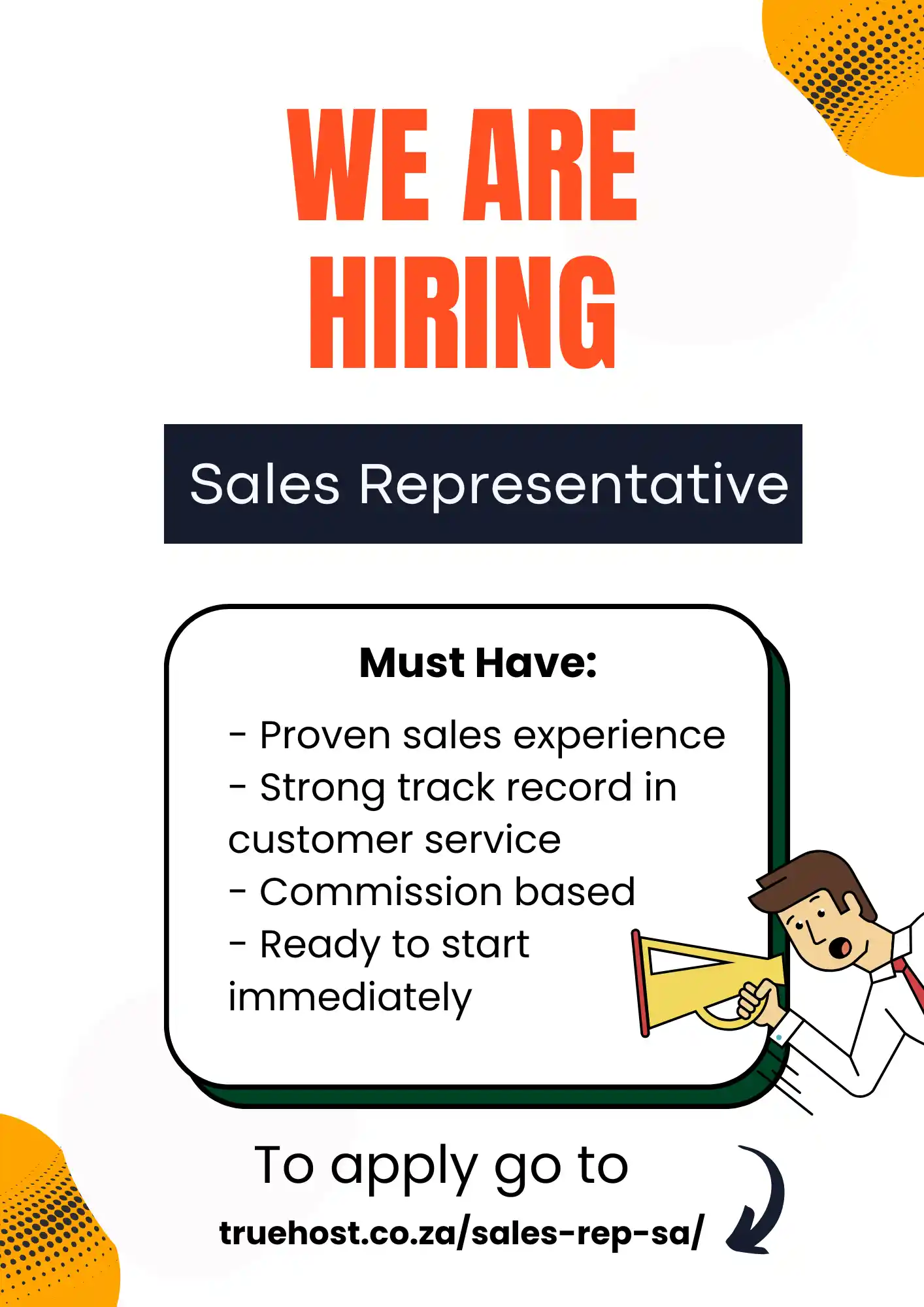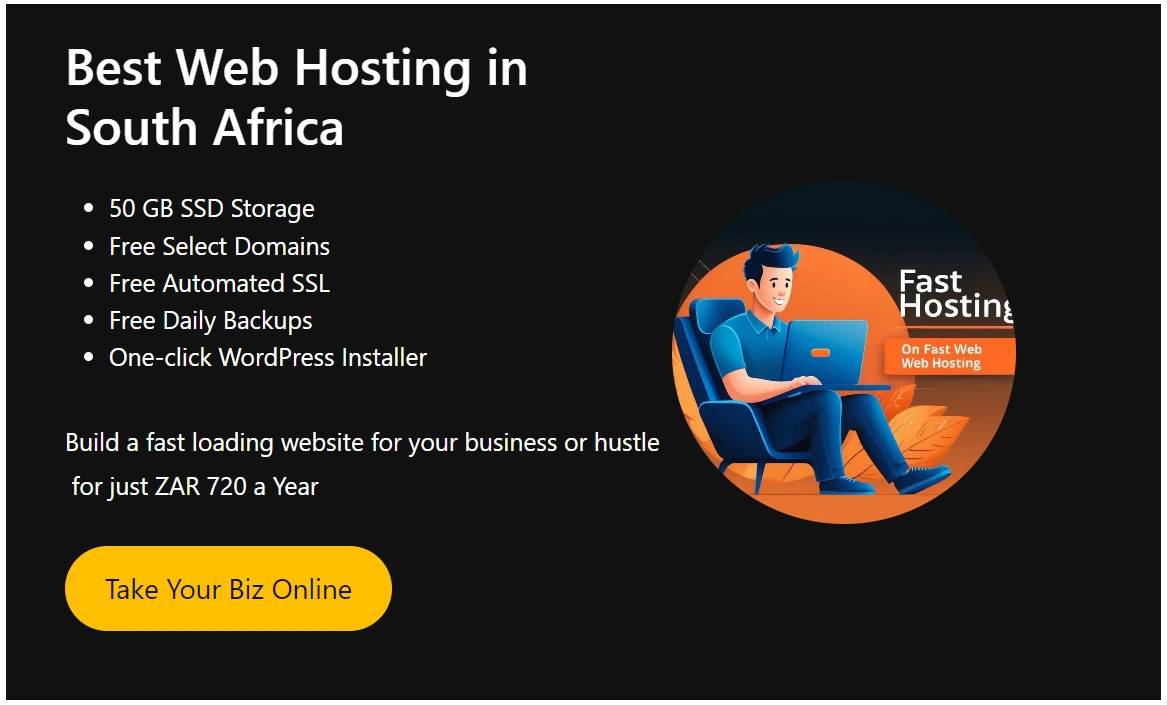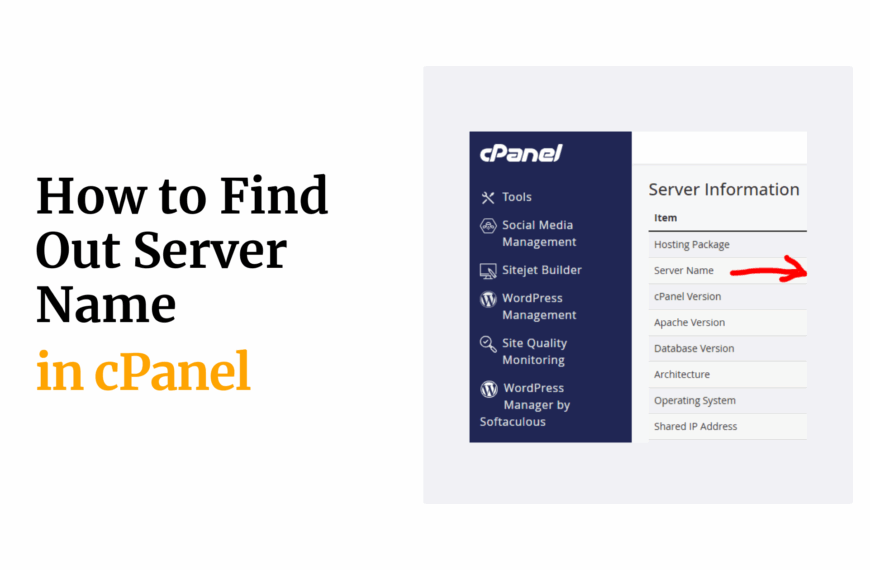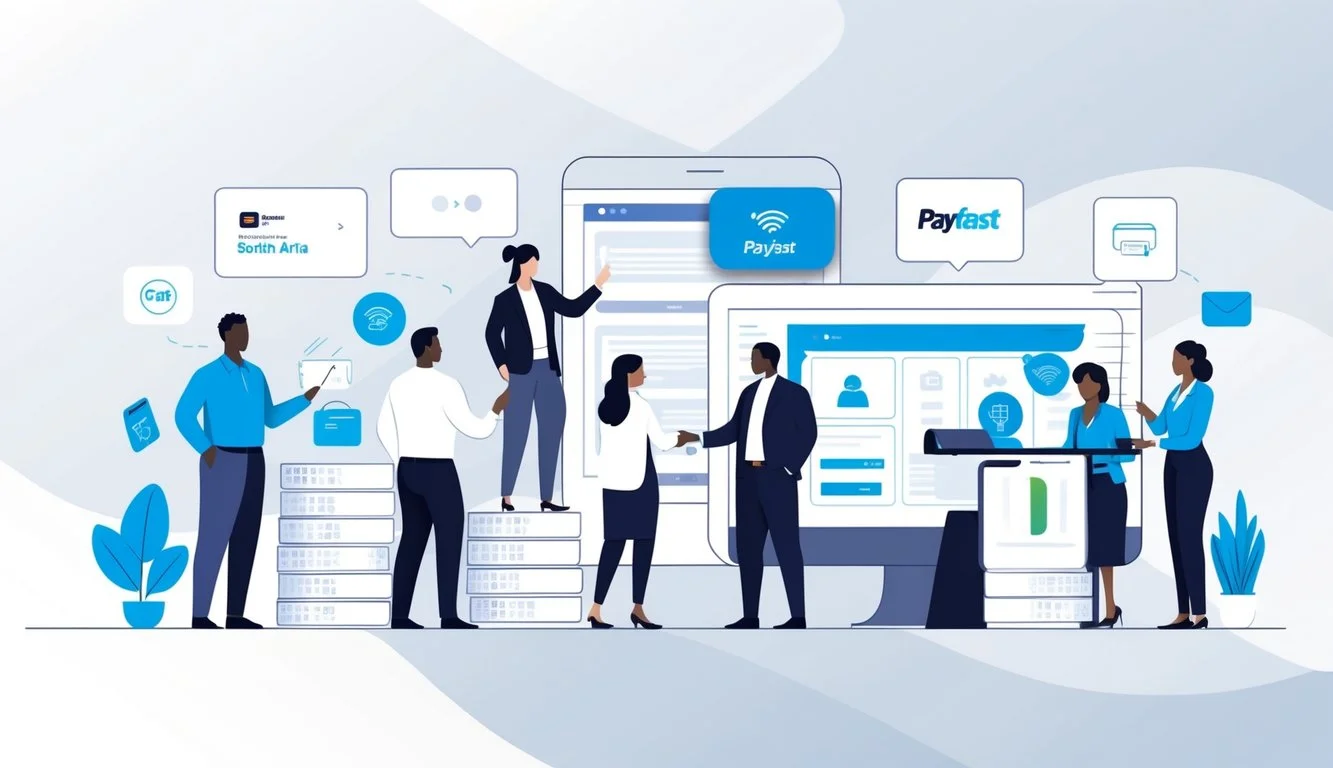Web development is one of the most promising tech careers to pursue in South Africa right now. With businesses rapidly adopting digital technologies, there is huge demand for skilled web developers.
It offers the opportunity to earn good salaries while working remotely or for top companies in South Africa.
There are several paths to starting a career as a professional web developer:
Table of Contents
Self-Taught
You can teach yourself web development through online courses, tutorials, documentation and building projects.
This independent approach requires discipline but allows you to move at your own pace.
Many successful developers are self-taught.
Bootcamps
Coding bootcamps are intensive training programs that aim to prepare you for a job as a developer in 3-6 months.
Bootcamps provide structure, mentorship, career coaching and a network of peers.
They require a full-time commitment.
University Degrees
A university degree in Computer Science or IT gives strong technical foundations and opens doors at top companies.
Degrees take 3-4 years to complete and can be expensive.
This post will cover the key skills required at each stage of becoming a web developer:
- Programming fundamentals
- Frontend and backend technologies
- Building projects
- Creating a portfolio
- Finding jobs
I’ll also provide recommendations for learning resources, bootcamps in South Africa, degree programs, and companies hiring web developers.
Whether you are just starting out or looking to switch careers, this guide will set you on the path to becoming a professional web developer in South Africa.
Learn Programming Fundamentals
Before diving into specialized web development frameworks and languages, it’s important to build a solid foundation in general programming concepts and paradigms.
Here are some of the fundamentals to learn:
Data Types
- Numbers, strings, booleans, null – ways of representing data in code
- Understanding the different data types and their uses
Variables
- Named containers for storing data values
- Declaration, assignment, scope, conventions
Operators
- Arithmetic, comparison, logical operators for manipulating data
- Operator precedence order
Conditional Logic
- Using
if,else if,elsestatements to control program flow based on conditions - Comparison and logical operators used in conditions
Loops
forandwhileloops to repeat code execution- Iterating over arrays, strings, numbers ranges etc.
Functions
- Reusable blocks of code for performing specific tasks
- Function arguments, return values, scope
- Helper functions, callbacks, arrow functions, recursion
Arrays
- Ordered data structures to store collections of data
- Creating, indexing, modifying arrays
- Iterating over arrays with loops
Objects
- Unordered data structures with key-value pairs
- Creating objects with attributes and methods
- Accessing and modifying properties
Algorithms
- Step-by-step procedures for solving problems programmatically
- Writing pseudocode walkthroughs for algorithms
- Evaluating efficiency of algorithms
Here are some recommended resources for learning programming basics:
- Khan Academy’s Intro to Programming Course – Free interactive course with videos and exercises
- Free Code Camp’s Scientific Computing with Python – Learn Python fundamentals through coding challenges
- The Odin Project’s Foundations Path – Open source full-stack development course starting from basics
- MDN’s JavaScript Basics – JS intro from Mozilla web docs
- Automate the Boring Stuff with Python – Practical Python for total beginners book with hands-on projects
Aim to spend 3-6 months getting comfortable with programming fundamentals before focusing on web development specifically.
Having a solid base will help you pick up new languages and frameworks more easily.
Master Frontend Web Development
After getting comfortable with programming basics, the next step is to start learning frontend web development.
Frontend developers create everything users see and interact with in websites and web applications.
To become job-ready, you’ll need to master essential frontend languages like HTML, CSS and JavaScript.
You should also learn popular JavaScript frameworks like React or Angular.
HTML
HTML provides the structure and semantics for website content.
Some key topics to learn are HTML document structure, headings, paragraphs, links, images, tables, forms. resources like freeCodeCamp, Codecademy, MDN docs make it easy to pick up HTML.
CSS
Cascading Style Sheets (CSS) controls the presentation and layout of web pages.
Learn CSS fundamentals like selectors, styling text, colors, boxes, margins, flexbox, grid, responsive design.
CSS frameworks like Bootstrap speed up styling.
JavaScript
JavaScript adds interactivity to websites by manipulating DOM elements, handling events, AJAX requests etc.
Important concepts include variables, operators, control flow, functions, arrays, objects, classes.
Modern features like async/await require understanding promises.
Frameworks like React use JSX syntax.
Build Projects
Reinforce your learning by building real frontend projects:
- Landing pages and portfolios to apply HTML/CSS skills
- Forms, calculators, TODO apps to practice JavaScript
- Connecting frontend to APIs to display and submit data
- Cloning site UIs like Airbnb, Twitter, Netflix to get hands-on with frameworks
JavaScript Frameworks
Frameworks like React, Angular and Vue.js simplify building complex frontend applications:
React – Component-based library created by Facebook using JSX syntax
Angular – TypeScript-based framework by Google following MVC architecture
Vue.js – Progressive framework building reactive UIs with composable components
All three have robust ecosystem of tools and strong community support.
UI/UX Design
Strive to make user-friendly, accessible interfaces:
- Follow principles like visual hierarchy, consistency, feedback
- Use color theory, typography, layouts effectively
- Make informed choices based on data and testing
Resources like Google’s UX Design Certificate can level up your skills.
Responsive Design
Websites must adapt seamlessly to phones, tablets, laptops and desktops. Core responsive design topics:
- Fluid layouts using % instead of fixed pixels
- Media queries to apply CSS styles conditionally
- Responsive images via srcset and sizes
- Mobile-first approach when building UIs
With consistent practice, you can become adept at crafting responsive, delightful user experiences powered by HTML, CSS and JavaScript in 6-12 months.
Learn Backend Web Development
While frontend code runs in the browser, backend code runs on the server. Backend developers build REST APIs, connect to databases, handle business logic and server configuration.
Some popular backend languages and frameworks include:
Node.js
Node.js allows writing servers in JavaScript. Key topics are modules, npm packages, Express web framework, handling routes and requests, integration with frontend.
Python
General purpose language great for backend services. Learn skills like data structures, OOP, web frameworks like Django and Flask, APIs.
PHP
PHP powers many of the web’s biggest sites. Covers server-side scripting, sessions, WordPress, Laravel framework, connecting to MySQL databases.
Ruby/Ruby on Rails
Ruby is an elegant OOP language optimized for programmer happiness. Rails is a beloved web MVC framework built in Ruby.
Java/Spring
Java enterprise backends are robust and scalable. Spring framework simplifies app development through dependency injection.
Databases
Backends require databases to persist data. Learn relational SQL like MySQL and PostgreSQL and NoSQL like MongoDB.
REST APIs
REST is a standardized way for frontend and backend to communicate. Build APIs using Node/Express, Django REST Framework, Rails etc.
Authentication
Secure backends using JSON Web Tokens, OAuth, bcrypt password hashing. Understand authentication methods like sessions vs tokens.
Caching
Caching improves performance by avoiding unnecessary database queries. Redis and Memcached are popular in-memory data stores.
Web Servers
Backend code runs on servers like Apache, Nginx, IIS. Learn basic server administration and deployment.
Testing
Write unit, integration tests to prevent bugs and ensure code quality. Jest, Mocha, PyTest are test runners for different languages.
Monitoring
Monitor server health with tools like Kibana, Grafana, Sentry. Get alerted to issues before users notice.
CI/CD
Automate backend deployments without downtime through GitHub Actions, Jenkins etc.
There are no shortcuts to becoming a strong full-stack developer – you’ll need patience and practice.
But backend skills ensure your web apps are robust, secure and scalable.
Become Familiar with Full-Stack Frameworks
While you can build apps mixing and matching various libraries, full-stack JavaScript frameworks make it easier to learn the entire web development stack.
Here are some popular full-stack frameworks to consider:
MERN
MERN combines MongoDB, Express, React and Node.js. MongoDB is a document-based NoSQL database.
Express and Node offer a JavaScript server environment.
And React provides a component-based frontend.
Together they allow building a complete JavaScript powered app. MERN streamlines sharing code and data between frontend and backend.
There is large community support as well.
Django
Django is a batteries-included Python web framework following the model-template-views pattern.
It includes an ORM for simplified database access and an admin dashboard out of the box.
For the frontend, Django templates render web pages using Django’s own template language. Options like React can be integrated for more complex UIs.
Django has excellent documentation and scales from small to large enterprise applications.
Ruby on Rails
Rails follows a similar MVC pattern as Django but for Ruby backends.
It uses an ORM called ActiveRecord to interface with databases. Views render erb templates by default.
Rails makes it fast to scaffold CRUD functionality for models. A big ecosystem of gems extends functionality.
Rails apps are often deployed to Heroku.
WordPress
WordPress is the most popular CMS for blogs, news sites and content sites.
While it uses PHP, admins rarely need coding skills.
For custom sites, WordPress REST API allows you to use modern JavaScript frameworks while still benefiting from WordPress’s admin and plugin ecosystem.
SvelteKit
SvelteKit is a modern web framework that includes Svelte for frontend, adapters for Node and Vercel for backend, and routing built-in.
It compiles to static assets during build time removing the need for JavaScript frameworks at runtime.
This results in excellent performance.
SvelteKit offers a fast dev workflow and is ideal for JAMstack apps hosted on CDNs.
Next.js
Next.js is a zero-config React framework optimized for production.
File-based routing and full-stack capabilities allow going from idea to production faster.
Next.js handles challenges like code splitting, server-side rendering, and SEO optimally out of the box. Popular for hosted sites on Vercel.
There is no one “best” full-stack framework.
Evaluate options based on your preferences for JavaScript vs Python/Ruby, traditional servers vs CDNs, SQL vs NoSQL etc.
Build Projects and Create a Portfolio
Theory will only get you so far as a developer – you need real hands-on experience building websites and applications.
That’s why working on projects and creating a portfolio is so important when starting out.
Projects Showcase Your Skills
Programming tutorials and courses can teach syntax and concepts in isolation.
But actually building meaningful projects is where you learn how everything comes together.
Projects allow you to:
- Apply your frontend, backend and full stack knowledge
- Think through application architecture and data modeling
- Practice coding everyday challenges like forms, login, databases
- Get experience debugging issues in real codebases
- Show employers concrete examples of your work
Create a Portfolio Website
The best way to display your projects is through a portfolio website. Your portfolio site:
- Shows off your work in one place for employers
- Demonstrates your grasp of HTML, CSS, JavaScript
- Lets you highlight your strongest technical and design skills
- Establishes your personal brand as a developer
A good portfolio site includes:
- About page introducing your background
- 3-5 featured projects with images, descriptions and code samples
- Skills overview with proficiency indicators
- Downloadable PDF resume
- Contact info and social media links
Project Ideas
Here are some projects to build up your portfolio:
- Landing pages and personal websites
- CRUD apps with forms, database backends
- Weather, news, cryptocurrency apps using APIs
- Ecommerce sites and shopping carts
- Social network or forum web app clones
- Mobile apps with React Native or Flutter
- Browser extensions like translation tools, ad blockers
- Games like tic tac toe, slot machines, trivia quizzes
Use Project Management Tools
Manage projects effectively with tools like:
- GitHub Projects – Track issues and progress
- Asana – Schedule tasks and milestones
- Whimsical – Collaborate on flowcharts
- Figma – Design and prototype UIs
Showcase Your Code
Use GitHub repositories to showcase project code for employers. Follow best practices like:
- Organized file structure and naming
- Modular components and services
- Clear comments explaining logic
- Proper indentation, spacing and formatting
- Descriptive commit messages
With a solid portfolio of real world projects, you can demonstrate your job readiness to employers and land your first web developer role.
Pursue a CS Degree (Optional)
A university degree in Computer Science or a related field can provide a strong foundation in software development and open doors at top technology companies.
However, it is possible to have a successful career as a web developer without a CS degree as well.
Here is an overview of the benefits of getting a degree, along with some of the alternatives:
Benefits of a CS Degree
- Deeper technical foundations – Algorithms, data structures, operating systems, databases etc. These core CS topics go deeper than typical web dev courses.
- Develop problem solving skills – CS focuses on analytical thinking and programming aptitude through assignments and projects.
- Proof of technical competency – A CS degree serves as validation of your hard skills for employers. Can improve prospects at companies that screen heavily on education.
- Access to internships – Summer internships can lead to jobs at tech giants and startups. Most programs only hire students.
- University environment – Networking, collaboration, mentorship, career services and recruiting events.
- Options to specialize – Pursue electives, research or concentrations in areas like machine learning, security, graphics, HCI etc.
Downsides of a Degree
- Time commitment – A 4 year bachelor’s degree is a significant time investment compared to focused web dev bootcamps.
- Theory-heavy curriculums – More general computer science than specialized vocational web development skills. Light on some modern frameworks.
- Cost – University education can be expensive, especially in South Africa. Potential student debt.
Alternatives to a Degree
It is certainly possible to get an entry level web developer job and advance your career with the following alternatives:
- Self-taught – Using structured curriculums from online schools like freeCodeCamp. Building projects and contributing to open source.
- Coding bootcamps – Accelerated 3-9 month programs focused on web technologies like JavaScript. Receive mentorship. Build portfolio.
- Associate’s degrees – Shorter 2 year programs in web or software development available at technical colleges.
- Apprenticeships – Paid on-the-job training under senior devs at some companies.
- Certificates – Platforms like Coursera offer accredited certification programs in domains like full-stack and frontend development.
So while a bachelor’s in CS can be advantageous, you can still thrive as a web developer through alternative training paths and work experiences.
Evaluate your specific interests and career goals when deciding if university is the right choice.
Attend Bootcamps or Online Courses
For those looking to switch careers or enter web development in SOuth Africa without a CS degree, coding bootcamps and online courses offer accelerated training options.
Coding Bootcamps
Coding bootcamps are intensive multi-month programs focused on gaining job-ready web development skills through hands-on training.
Here are some of the key benefits of attending a bootcamp:
- Structured curriculum – Organized programs designed to take you from beginner to employable in 3-6 months. Build a solid portfolio.
- Learn by doing – Heavy focus on projects and team-based building versus lectures on theory. Apply your skills right away.
- Supportive community – Cohort model provides a built-in network for peer learning. Instructors provide mentorship.
- Career coaching – Get assistance crafting your resume/LinkedIn, practicing coding interviews and applying to jobs.
- Flexible schedules – Some bootcamps offer part-time or online options in addition to immersive.
Top Coding Bootcamps in South Africa
Here are some reputable bootcamps to consider in South Africa:
- HyperionDev – Offer part-time and full-time software engineering bootcamps covering web and mobile development.
- WeThinkCode_ – Free 2-year program focused on languages like Java and JavaScript. Requires relocating to Johannesburg or Cape Town.
- CodeSpace Academy – Web and app development bootcamp with campuses in Cape Town and Johannesburg.
- CodeTribe – Part-time coding bootcamp teaching web development skills. Based in Cape Town.
- Springboard – Online bootcamp with 1-on-1 mentorship. Specializations in software engineering and UX design.
Online Courses and Certificates
For flexible, affordable alternatives, online courses allow learning on your own schedule:
- LinkedIn Learning – Extensive on-demand courses and video tutorials covering all aspects of web development and programming.
- freeCodeCamp – Highly regarded free full-stack development program using self-paced coding challenges. Earn certifications.
- The Odin Project – Another free full-stack JavaScript curriculum with thousands of students. Open source tutorials.
- Udemy – Marketplace of affordable video courses on every programming topic. Frequent discounts available.
- University Certificates – Programs from Coursera, edX, Udacity and others focused on computer science and web programming.
Whether you choose a bootcamp or online learning, be consistent about applying your skills through concrete projects to become job ready.
Treat learning as an ongoing activity even after getting your first role.
Apply for Web Developer Jobs in South Africa
Once you have developed your skills through real world projects, built up your portfolio, and polished your resume – it’s time to start applying for web developer jobs.
Here are some tips for landing your first role:
Identify Relevant Job Openings
Look for entry level web developer jobs that match your skillset. Check sites like:
- LinkedIn Jobs
- GitHub Jobs
- OfferZen
- CareerJunction
- Careers24
Many companies don’t advertise openings publicly.
Follow and connect with recruiters on LinkedIn to find unlisted roles.
Tailor Your Resume
Carefully review the job description.
Update your resume to highlight skills and experiences that closely match the requirements.
For each application, customize:
- Skills/Technologies section – List requirements mentioned in JD
- Project descriptions – Tailor to show alignment with role
- Experience section – Use same keywords as company
Prepare for Technical Assessments
Expect coding challenges and technical interviews assessing:
- Programming fundamentals – data structures, algorithms
- Web development skills – HTML, CSS, JavaScript, React etc.
- Problem solving and communication
Practice mock interviews on platforms like Interviewing.io.
Review common algorithms questions.
Ace the Non-Technical Interview
In behavioral interviews, showcase soft skills like:
- Communication – Explain thoughts clearly
- Collaboration – Share examples of teamwork
- Passion – Convey genuine interest for web development
- Problem solving – Overcome obstacles through critical thinking
- Ability to learn – Pursue continuous skills growth
Evaluate Company Culture
Consider company culture fit alongside compensation and tech stack. Look for:
- Supportive learning environments for those starting out
- Healthy work-life balance
- Opportunities for mentorship
- Inclusive and diverse teams
Negotiate Job Offers
Research expected salary ranges using sites like PayScale. Consider negotiating if offer is below average.
Be persistent through the job search. With the right preparation, you can successfully transition into your first professional web developer role.
Wrap!
Becoming a professional web developer is an exciting journey that requires dedicated effort but pays off through lucrative, flexible careers.
Here are the key takeaways:
Learn Programming First
Start by building core programming and computer science skills before specializing in web development. Understand fundamentals like data structures, algorithms, databases etc.
Master HTML, CSS, JavaScript
These languages form the foundation for front end web development. Practice until you can comfortably build responsive, interactive UIs.
Back End and Full Stack Skills
Expand your skillset by learning back end development using Node, Python, Ruby etc. Work with SQL and NoSQL databases. Become familiar with full stack frameworks.
Develop Through Projects
Theory alone isn’t enough – you need real hands-on experience. Build lots of meaningful projects and push your skills.
Create a Portfolio
Showcase your best work in a portfolio site. This will be vital for getting hired.
Consider a CS Degree
A bachelor’s in computer science provides strong technical skills and career opportunities, but is not required.
Coding Bootcamps
These immersive programs equip you with web development skills rapidly through hands-on training.
Online Courses
Flexible, affordable option for self-directed learning. Get hands-on with platforms like freeCodeCamp.
Apply for Jobs
Once you have a solid portfolio, start applying for entry level roles. Highlight skills from job descriptions in customized resumes. Prepare for technical assessments.
Keep Learning
Development moves quickly. Commit to lifelong learning of new languages, frameworks and best practices.
With consistent, focused effort – you can become job ready within 9-12 months.
Be patient as you enhance your skills.
Web development offers rewarding, creative careers where you can advance quickly.
Read also:
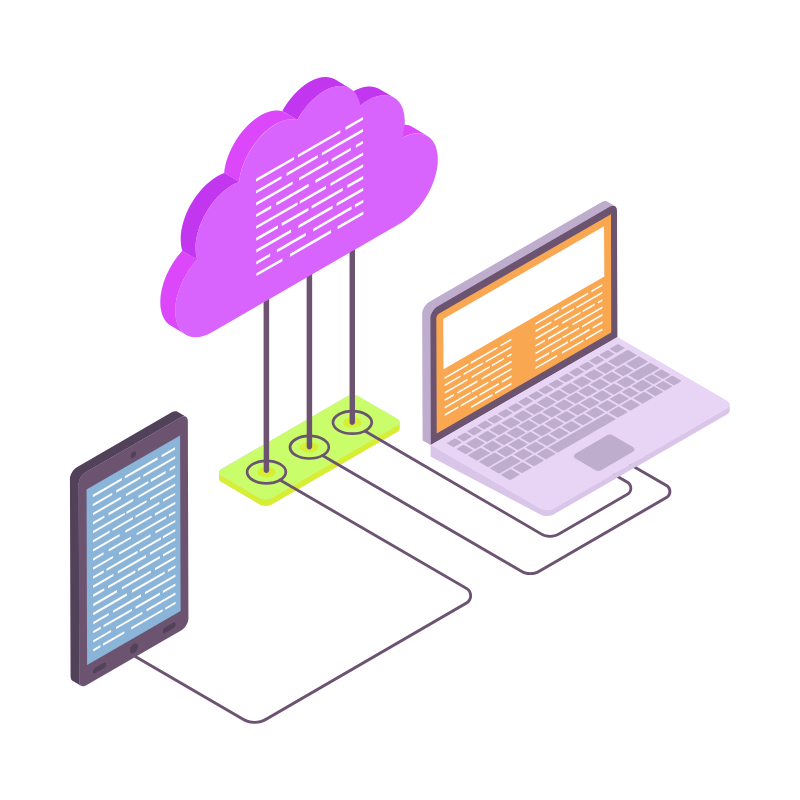 Web Hosting
Web Hosting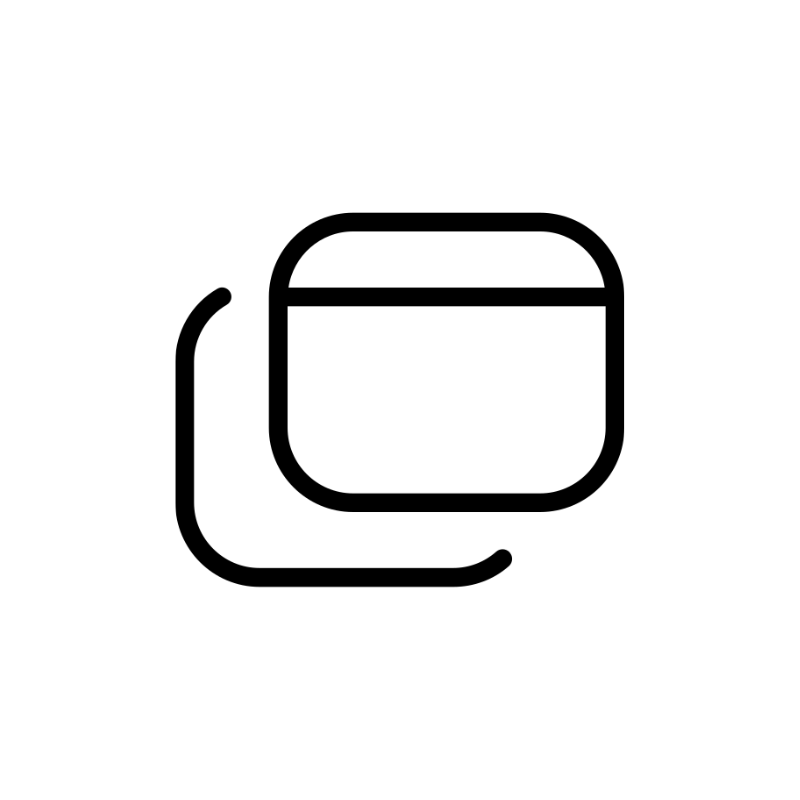 Windows HostingBuilt for Windows apps and websites – stability, speed and flexibility
Windows HostingBuilt for Windows apps and websites – stability, speed and flexibility Reseller HostingLaunch a hosting business without technical skills or expensive infrastructure
Reseller HostingLaunch a hosting business without technical skills or expensive infrastructure Affiliate ProgramRefer customers and earn commissions from sales across our platform
Affiliate ProgramRefer customers and earn commissions from sales across our platform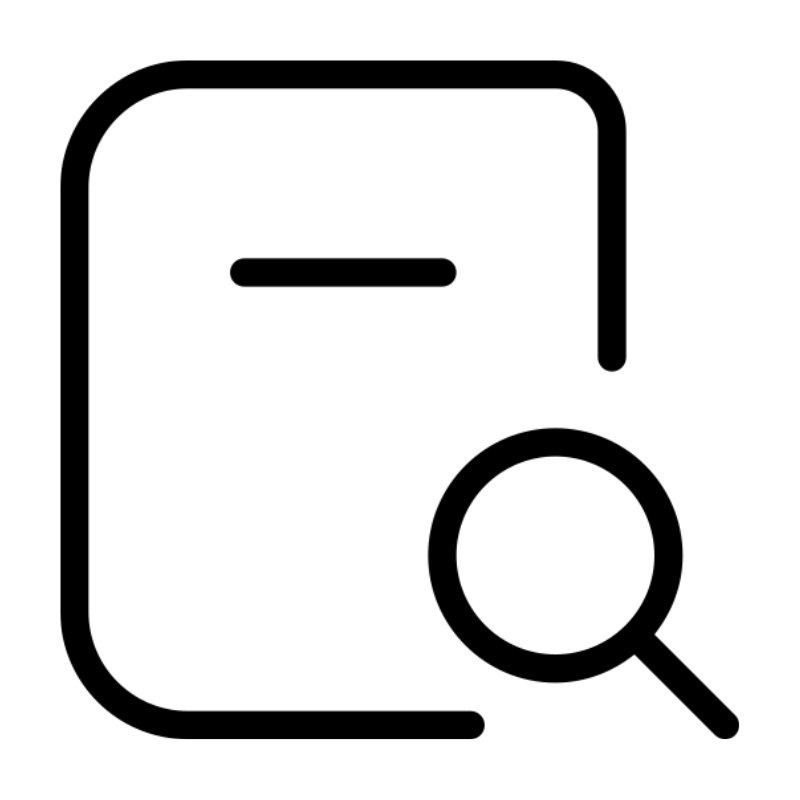 Domain SearchFind and secure a domain name in seconds with our quick lookup tool
Domain SearchFind and secure a domain name in seconds with our quick lookup tool CO ZA Domains
CO ZA Domains All DomainsExplore domain names from over 324 TLDs globally – all in one place
All DomainsExplore domain names from over 324 TLDs globally – all in one place Free Whois Lookup Tool South Africa
Free Whois Lookup Tool South Africa VPS
VPS SSLs
SSLs